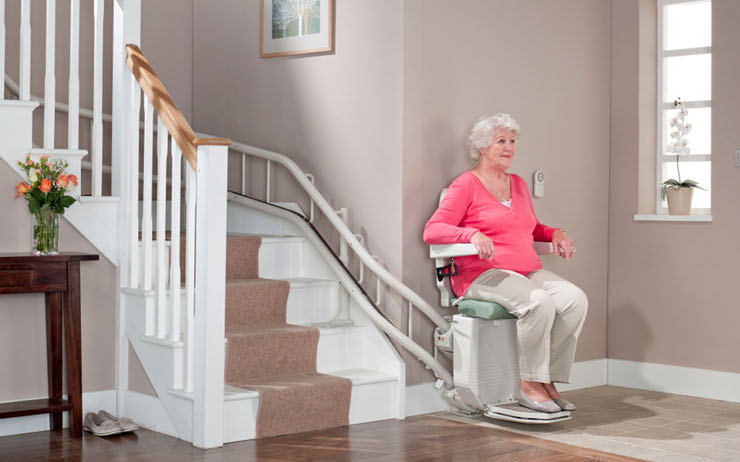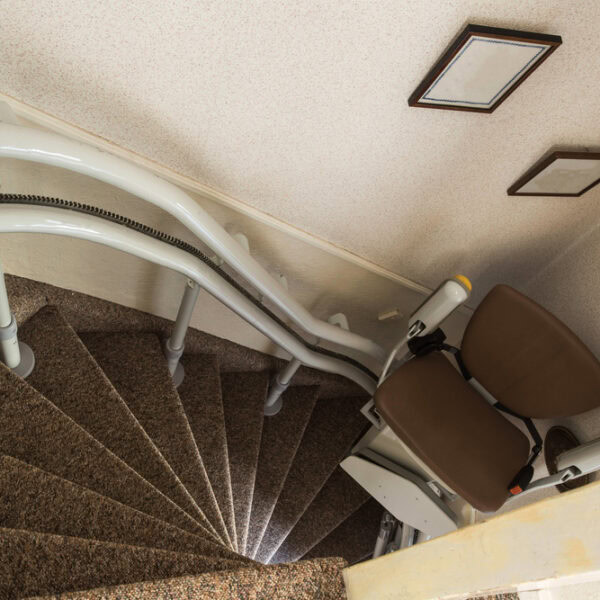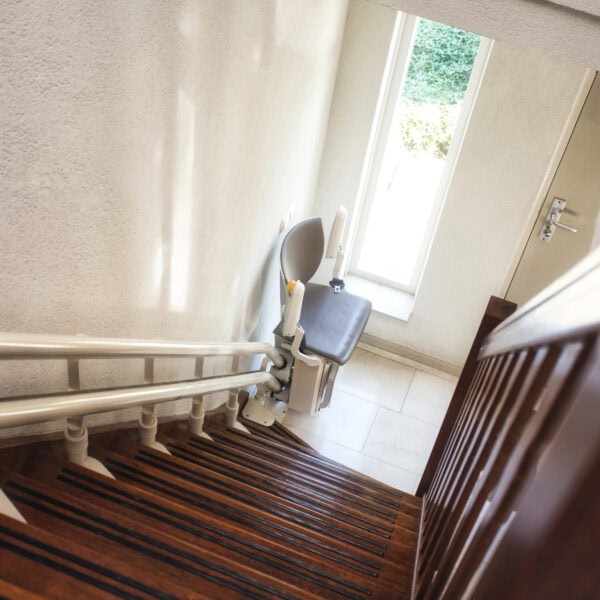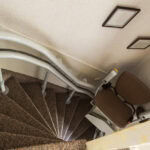
Expert Tips: Selecting the Perfect Stair Elevator for Your Staircase
March 31, 2025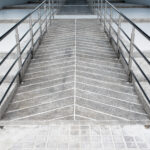
Temporary and Permanent Wheelchair Ramps
May 14, 2025Stair lifts offer life-changing mobility and safety benefits for your home, but understanding the installation process is essential to ensure everything runs smoothly. In this guide, you’ll learn how a stairlift is securely attached to your stairs without compromising their structure, why professional installation is safer and more reliable than DIY, and what to expect during setup. By knowing these key details, you can feel confident about making the right choice for your needs and enjoy the freedom a stairlift provides with minimal impact on your home.
Key Takeaways:
- Stairlifts are securely attached to the stairs using brackets fastened with screws, minimizing impact on the stair structure and surrounding areas.
- Professional installation is recommended to ensure safety, proper alignment, and operation. Installation typically takes only a few hours.
- While stairlifts generally do not damage carpets or stairs, minor signs such as screw holes or carpet indentations may remain after removal.
Understanding Stair Lifts
While a stair lift might seem like a simple assistive device, understanding how it works and its key components can help you feel more confident when considering one for your home. These devices are designed to provide safe, easy access to different floors, especially if you have mobility challenges. Knowing the basics about stair lifts will prepare you for a smooth installation process and proper usage.
What is a Stair Lift?
Among home mobility aids, a stair lift is a motorized chair or platform that travels along a fixed rail mounted to your stairs. Its function is to carry you safely up and down the staircase, significantly improving your independence and safety. Stair lifts are tailored to fit various home staircases, offering a seamless way to navigate between floors without the strain or risk of climbing stairs.
Types of Stair Lifts
Lift options vary to fit different staircase layouts and personal needs. You can choose from straight stair lifts designed for staircases without bends and curved stair lifts that are custom-built to follow the contours of your stairs. Additionally, outdoor stair lifts are available for assistance with steps leading to your home. Knowing which type suits your staircase ensures a safer and more comfortable experience.
| Type | Description |
| Straight Stair Lifts | Fits staircases with no bends or curves, easy and quick to install |
| Curved Stair Lifts | Custom-designed to fit staircases with landings, bends, or curves |
| Outdoor Stair Lifts | Built for outdoor use with weather-resistant features |
| Platform Stair Lifts | Designed for wheelchair users to ride while seated in their chair |
| Standing Stair Lifts | Allows users to stand while being transported up and down stairs |
Knowing the correct type of stair lift for your home means considering factors like your staircase shape, mobility requirements, and space constraints. Choosing the correct model will provide safe, reliable, and efficient stair lift use, helping you maintain autonomy in your daily life.
Assessing Your Needs
Many factors come into play when deciding on the right stairlift for your home. You must consider your unique staircase layout, personal mobility needs, and the lifestyle of everyone using the stairlift. By carefully assessing these elements beforehand, you can ensure a safe, comfortable, and efficient solution tailored to your home and requirements.
Evaluating Staircase Type
Any staircase can present different challenges depending on its shape and size. Whether your stairs are straight or curved, narrow or wide, understanding the type of staircase you have helps you choose a stairlift that fits perfectly. You should arrange a professional assessment to identify the best model and installation approach, ensuring a seamless integration without damaging your stairs or surrounding walls.
User Requirements
Below, you should consider who will use the stairlift most frequently and their specific mobility needs. Factors such as weight capacity, seating comfort, and ease of use are vital to address. Being honest about these needs will help you choose a stairlift that offers maximum comfort and safety every time you use it.
Requirements can vary widely from simple assistance to fully supported mobility solutions. You might need features like swivel seats for easier transfers, adjustable seat heights, or remote control options. Discussing these with your installer ensures your stairlift is tailored to your daily routine, providing you with the confidence and independence you deserve.
Safety Considerations
Your and your household’s safety is always a top priority when installing a stairlift. You want reassurance that the equipment is installed with secure, professionally fitted brackets and that the track alignment is precise to prevent mishaps. Ensuring clear passage and unobstructed movement along the stairway reduces trip or collision risks.
Considerations should also include regular maintenance and proper user training. Your installation team will guide you on safe operation, helping you avoid common hazards such as improper seating or blocking the track. Taking these safety steps seriously means your stairlift will remain a reliable and secure aid in your home.
Choosing the Right Stair Lift
Not all stair lifts are created equal, and selecting the right one for your home and needs is necessary for safety and comfort. You’ll want to consider the specific shape of your staircase, whether straight or curved, and consider the weight capacity and design that will work best for you. Evaluating these factors with a professional will ensure your stair lift fits perfectly and functions reliably daily.
Features to Consider
In addition to basic functionality, you should consider key features like swivel seats, adjustable speed, and safety sensors that stop the lift if there’s an obstruction. Other important considerations include ease of use and how the stair lift will fit within your home’s carpet and stairs without causing damage. Features like track design and distance from walls or banisters can affect safety and comfort during regular use.
Brands and Manufacturers
Among the wide range of stair lift brands, the best choice is one known for quality, reliability, and a strong service network. Opting for trusted manufacturers like Companion Stairlifts gives you confidence in professional installation and long-term support. Working with established brands means you can access tailored options for straight or curved staircases and benefit from expert advice on the best model for your home.
Even within trusted brands, variations in design and technology exist. Some companies offer bespoke stairlifts, designed specifically for your staircase shape and size, which enhances safety and user comfort. Evaluating manufacturer warranties, customer reviews, and after-sales service is necessary in making an informed decision that meets your expectations.
Budget Considerations
Brands have varying price ranges, but at Companion Stairlifts, installation is included in the purchase price, offering transparency and ease. Your final cost will depend on the stairlift type—straight lifts generally cost less than curved models. Speaking to an advisor can help you identify options that fit your budget while meeting your safety and accessibility needs.
Features such as advanced safety sensors, custom fitting, and durable materials may influence the cost but also contribute to longevity and peace of mind. Balancing your budget against these aspects ensures you invest in a stair lift that offers value and functionality without compromising quality or security.
The Installation Process
Once again, installing your stairlift involves carefully planned steps to ensure safety, comfort, and optimal performance. This process is carried out by professionals who customize the setup to fit your unique staircase while minimizing any impact on your home. From initial assessments to the final testing, each phase is designed to provide you with confidence and peace of mind as you prepare to improve your mobility.
Pre-Installation Assessment
About the pre-installation assessment, this visit allows the specialist to measure your staircase and understand its specific characteristics. You’ll discuss your needs and preferences to tailor a stairlift that fits perfectly. This step ensures that the model and installation approach are ideal for your home, whether you have a straight or curved staircase, guaranteeing a seamless fit and enhanced safety.
Tools and Equipment Needed
Power drills, screwdrivers, levels, and measuring tapes are among the necessary tools for installation, ensuring precision and security. The professional team also utilizes specialized brackets and rail components to support the stairlift while minimizing damage to your stairs or walls.
Considering the complexity of aligning the rail and properly securing the brackets, specialized equipment is necessary to handle the delicate balance of safety and stability. The correct tools help prevent any misalignment or structural strain, which could affect the stairlift’s operation or your home’s integrity.
Step-by-Step Installation Guide
Installation generally follows clear, sequential stages. The process will take a few hours, during which the rail will be carefully mounted, the chair will be attached, and electrical connections will be made. Afterward, you will receive hands-on guidance on safely operating and maintaining your stairlift.
| Step | Action |
|---|---|
| 1 | Measure and plan the rail layout based on the stairs’ dimensions |
| 2 | Attach brackets securely to the stair treads with screws |
| 3 | Mount the rail on brackets, ensuring proper alignment |
| 4 | Fix the stairlift chair to the rail mechanism |
| 5 | Connect the power supply safely and test the system |
| 6 | Provide user training on safe operation and maintenance |
Tools and equipment influence safety and the quality of your stairlift installation. Proper use of power tools like drills demands caution to avoid damage to the stairs or walls. The precision of levels and measuring tapes ensures the chair moves smoothly and safely along the track. Professionals rely on high-quality brackets that maintain your stairs’ structure, so you can confidently enjoy your stairlift without concern.
Maintenance and Care
Despite its robust design and professional installation, your stairlift requires regular maintenance and care to remain safe and reliable for daily use. By keeping your stairlift well-maintained, you can extend its lifespan and avoid unexpected breakdowns, giving you peace of mind and confidence in your mobility at home.
Regular Maintenance Schedule
You should clean the stairlift tracks and seat regularly to prevent dust and debris buildup, which can affect its smooth operation. It’s also wise to test the controls and safety features regularly. Many manufacturers recommend scheduling a professional check-up at least once a year to ensure all components function optimally and safely.
Common Issues and Troubleshooting
Alongside routine checks, it’s helpful to be aware of common issues such as unusual noises, slow movement, or failure to respond to controls. These symptoms can often be resolved by ensuring the track is transparent and the power connections are secure. If problems persist, contact your stairlift provider.
Understanding these typical troubleshooting steps will save you time and prevent minor issues from becoming serious problems. It’s important to avoid attempting repairs beyond basic checks, as improper handling can compromise your safety or cause further damage to your stairlift.
Professional Servicing
In addition to regular cleaning and quick troubleshooting, having a professional technician service your stairlift is vital. Professionals have the expertise to inspect internal components, lubricate moving parts, and update any software, ensuring your stairlift continues to operate smoothly and meet safety standards.
But relying on professional servicing goes beyond fixing broken parts. Scheduled servicing helps to identify wear and potential issues before they develop into costly repairs or dangerous malfunctions. It also reassures you that your stairlift will perform safely every time you use it, preserving your independence and home environment.
Summing up
Considering all points, installing a stairlift is a straightforward process. When handled by professionals, it ensures your stairs and home remain intact and secure. You can expect minimal impact on your carpet and structure, with installation typically completed within a few hours. Whether your staircase is straight or curved, a bespoke solution can be tailored to fit your needs. By choosing expert stair lift installers, you ensure safety, proper setup, and guidance on use, giving you confidence and ease of access throughout your home.
FAQ
How long does it typically take to install a stairlift?
Installing a straight and curved stairlift usually takes a few hours. This timeframe includes the physical installation of the track and seat, as well as instructions for the user and household members on how to operate, maintain, and clean the stairlift safely.
Will installing a stairlift cause permanent damage to my stairs or carpet?
The installation involves attaching brackets to the stair treads with a few screws, which may leave small holes visible after removal. Carpets might show minor indentations due to the stairlift’s weight, but these can often be treated with a steam cleaner. The structural integrity of the stairs remains intact when professionals carry out the installation.
Is it advisable to install a stairlift without professional assistance?
It is recommended that professionals install stairlifts. Proper installation requires accurate track alignment, secure bracket fastening, and safe electrical connections. Professionals ensure these steps are completed correctly to ensure the stairlift’s safe and reliable use.

Introducing Jeff Cates, the visionary Founder and Owner of CAPS Remodeling. After experiencing a profound personal event involving his son in 2007, Jeff was inspired to serve a higher purpose: to create safer, more comfortable, and independent living conditions for the elderly and disabled by modifying their current homes. Jeff’s deep-seated religious beliefs form the moral compass that steers CAPS daily operations. Apart from his unwavering dedication to his work, Jeff finds joy in boating and cherishing moments with his family.

